An ambitious world-first is currently underway on Wellington’s Miramar Peninsula. It’s not a new blockbuster movie from Miramar-based Peter Jackson or Weta Workshop, but rather the first stage of an attempt to create a predator-free capital city -and it’s on track to be completed by Christmas.
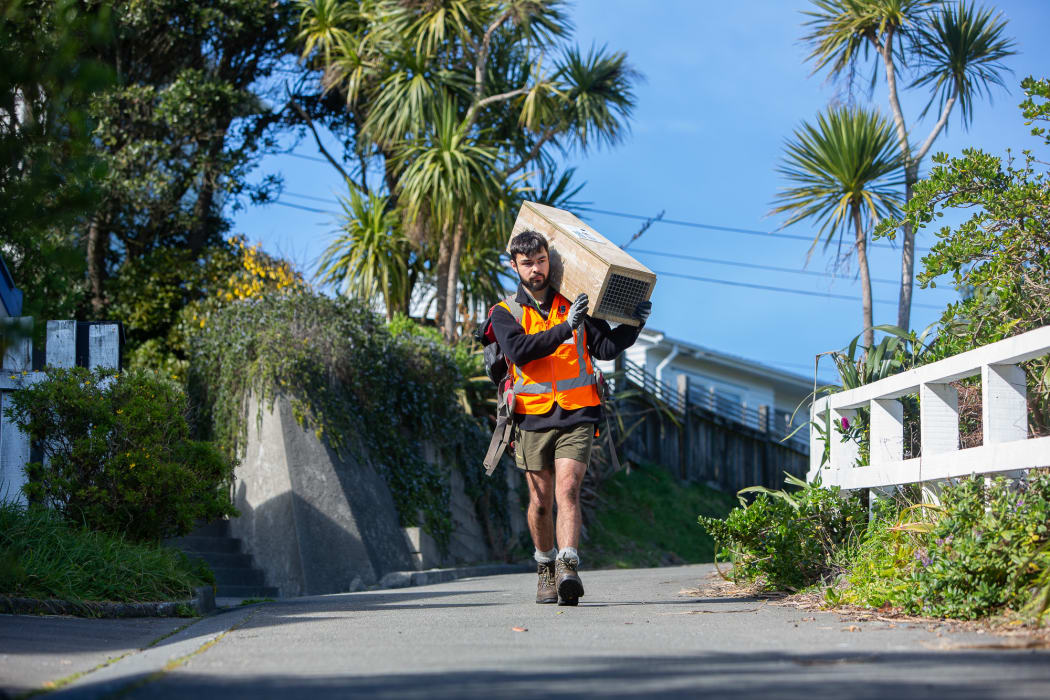
Predator-Free Wellington team member Sebastian du Feu carrying one of the 1800 trap boxes positioned in a 100-metre grid across Miramar Peninsula. Photo: Ian Robertson Photography Ltd./ Predator-Free Wellington
Subscribe to Our Changing World for free on Apple Podcasts, Spotify, Stitcher, iHeartRADIO, Google Podcasts, RadioPublic or wherever you listen to your podcasts
Predator-Free Wellington has begun a 10-year project to get rid of possums, rats (ship and Norway rats) and mustelids (stoats, ferrets and weasels) in Wellington, beginning in the eastern suburbs on Miramar Peninsula.
Miramar Peninsula is home to 20,000 people. Its many suburbs include Wellington city’s richest suburb, as well as its poorest suburb.
The peninsula is bounded by Cook Strait to the south and surrounded by Wellington harbour. It is separated from the rest of Wellington by a narrow low-lying isthmus where Wellington airport is situated.
Once rats, stoats and possums have been eradicated, this location makes it very defendable against future incursions, says Predator-Free Wellington project lead John Hambidge.
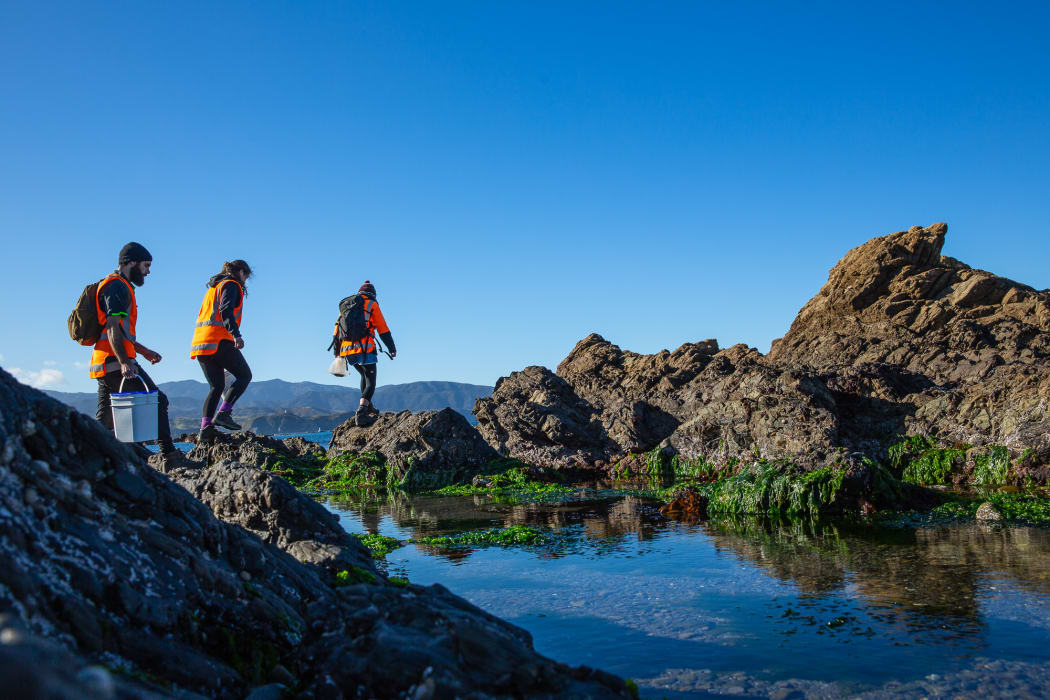
The effort to make Miramar Peninsula predator-free involves getting rid of stoats, possums and stoats in every nook and cranny on the peninsula, right down to high tide mark on the Cook Strait coast. Photo: Ian Robertson Photography Ltd./ Predator-Free Wellington
The Miramar 2019 project began early this year, when three community engagement staff began door-knocking, explaining the project and asking permission from residents to put bait stations and traps in their backyards.
The team got 3000 permissions, and said they were very pleased with the positive response, with 99 percent of people agreeing to give access to their property.
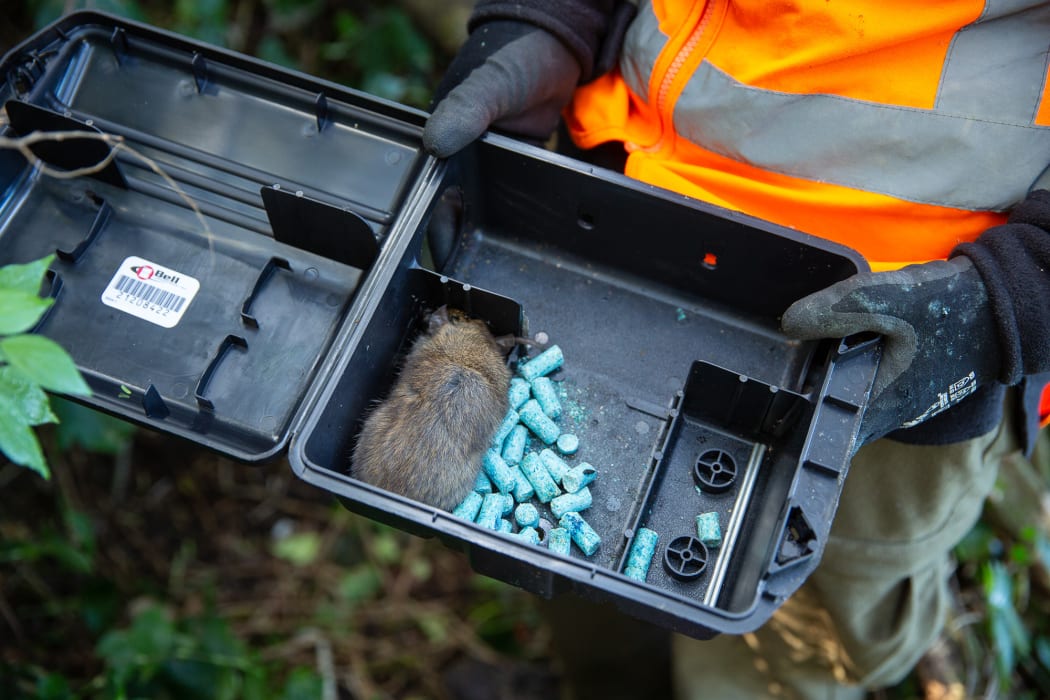
A rat returns to a bait station to die, a few days after it has consumed a lethal dose of the toxin brodifacoum. Photo: Ian Robertson Photography Ltd./ Predator-Free Wellington
Around 4000 bait stations have been placed across the peninsula in a 50-metre grid. The stations contain brodifacoum-laced pellets which will kill the rats about a week after being ingested.
John says not much is known about the home range of urban rats (see last week’s Our Changing World story about tracking inner city rats), but he is confident that this spacing will ensure every rat has access to a station.

Predator-Free Wellington staff check bait stations and traps on Miramar's south coast. Large areas of bush which cloak the hillsides behind them are a favourite rat haunt. Photo: Ian Robertson Photography Ltd./ Predator-Free Wellington
The bait stations were first set in late July, and the bait has been replaced or refreshed every week.
The idea is that after eating the baits, a rat shares information about the source of this food with other rats (they can smell it on each other). It takes a few days for a rat to die, so it doesn’t associate the baits with feeling unwell.
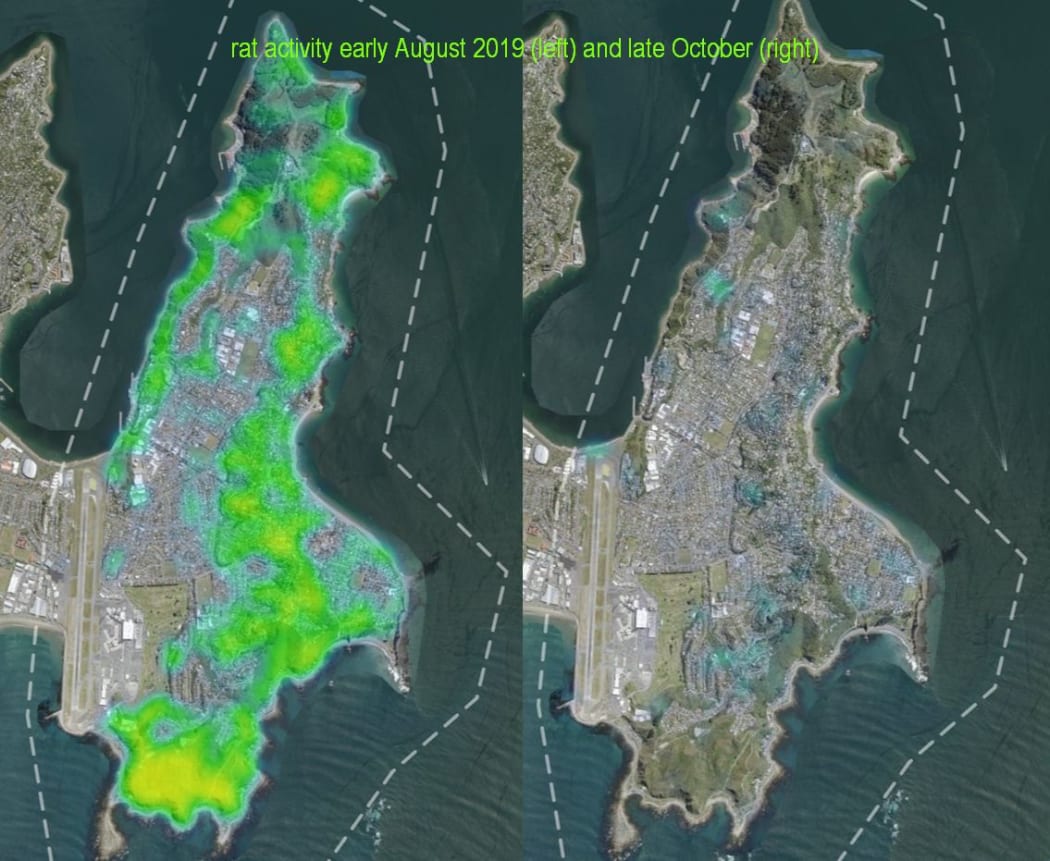
A heat map of the amount of rat bait being eaten shows intense activity over much of Miramar Peninsula in early August 2019 (left), and much less activity in late October once many rats have died. Photo: Predator-Free Wellington
The amount of bait being eaten dropped by 90 percent between early August and late October.
About 1800 trap boxes have been placed at 100-metre intervals. Each box contains two DOC200 kill traps and is baited with fresh rabbit meat. The traps will kill rats but the main aim is to kill stoats and weasels.
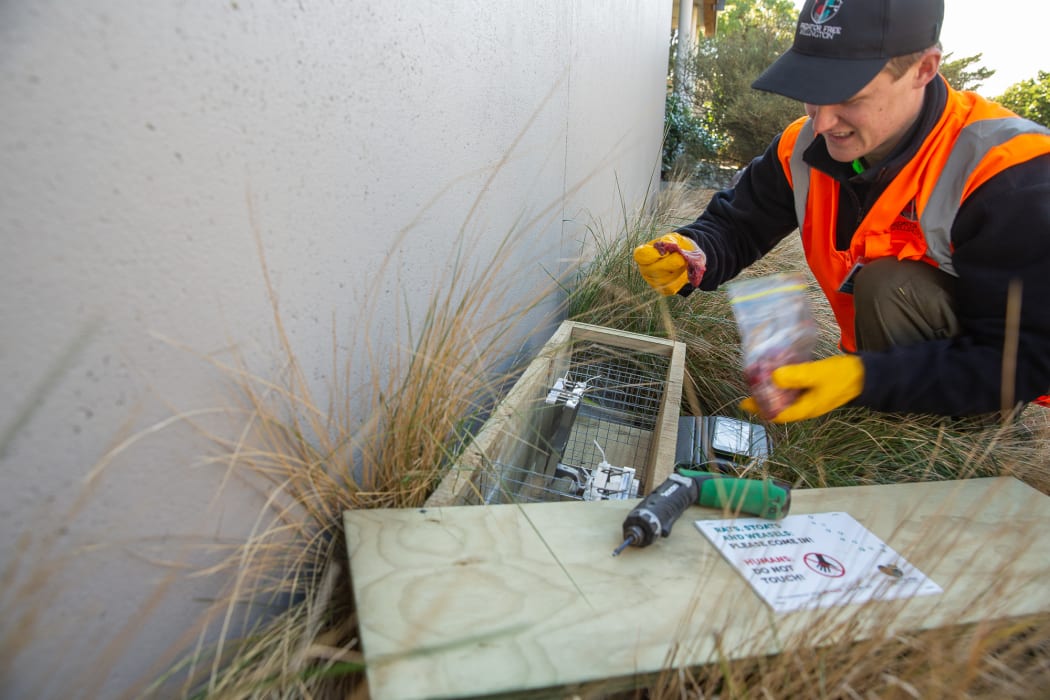
David Lewis from Predator-Free Wellington baits a trap box with fresh rabbit, which is a favourite food for stoats. Each trap box contains two Doc200 traps. Photo: Ian Robertson Photography Ltd./ Predator-Free Wellington
John said the trap boxes were in position from late July but were left unset until late October. By this stage most rats are dead, ensuring that the traps won’t get clogged up by rats but will be available for stoats.
The first week that the traps were set, they caught 15 rats and five weasels.
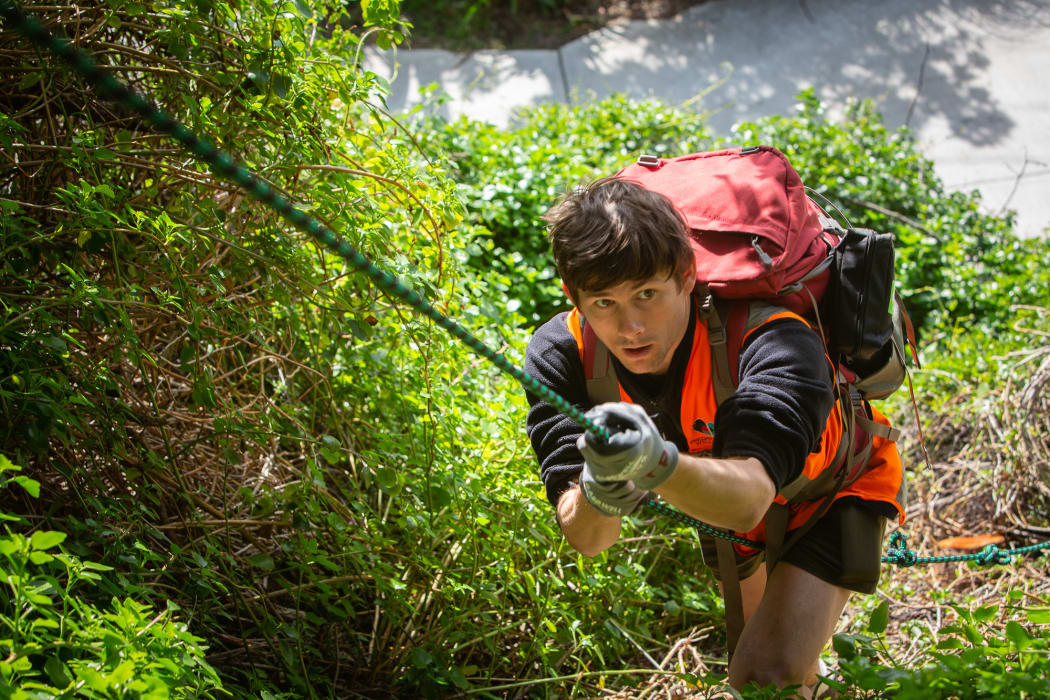
Miramar Peninsula in Wellington includes steep gullies and areas of rugged cliffs as well as flat suburban streets. Taison Pelman uses a knotted rope to climb up a particularly steep bank to reach one of the bait stations. Photo: Ian Robertson Photography Ltd./ Predator-Free Wellington
Miramar Peninsula has a range of habitats, from dense suburbs, to commercial and light industrial, as well as large areas of bush reserve, pine plantation, scrubby coastal areas and weedy gullies.
Before baiting began, the greatest density of rats was around the coast, while the commercial area was surprisingly free of rats.
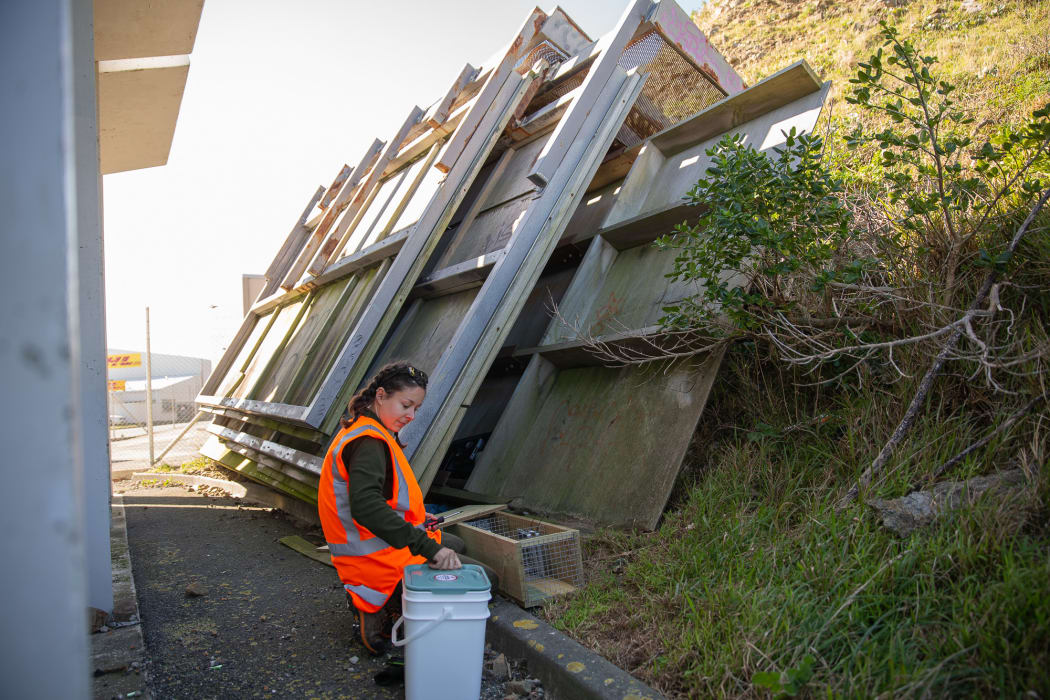
Emma Rowell from Predator-Free Wellington checks one of the trap boxes that are set across Miramar Peninsula, which includes residential, light industrial and commercial areas as well as large areas of bush. Photo: Ian Robertson Photography Ltd./ Predator-Free Wellington
John says that the project expects to have killed all rats and stoats by Christmas. Possums have been previously eradicated by Greater Wellington.
The team will use detection devices such as chew cards and wax tags to indicate whether any animals have remained untrapped, as well as using trained rat-detector dogs to sniff out the last survivors.
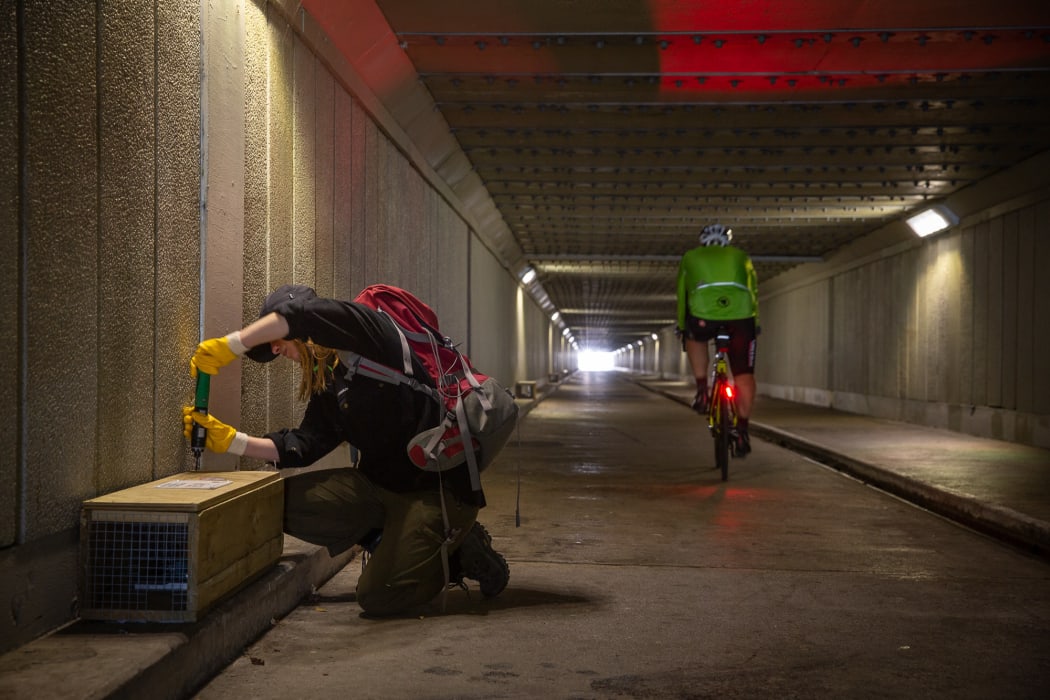
While Wellington Airport provides a good buffer to stop rats and stoats reinvading Miramar Peninsula, animals can get around each end and also travel through a pedestrian and cycle underpass beneath the airport runway. Pattern Reid checks one of the underpass traps. Photo: Ian Robertson Photography Ltd./ Predator-Free Wellington
A dense buffer zone of traps and bait stations will remain in place around Wellington airport and the neighbouring suburb of Rongotai, designed to catch rats and stoats before they can reinvade.
Predator-Free Wellington will roll the same predator-free programme across the city over the next decade, following the same model of baiting and trapping, moving suburb by suburb from the south-east to the north.
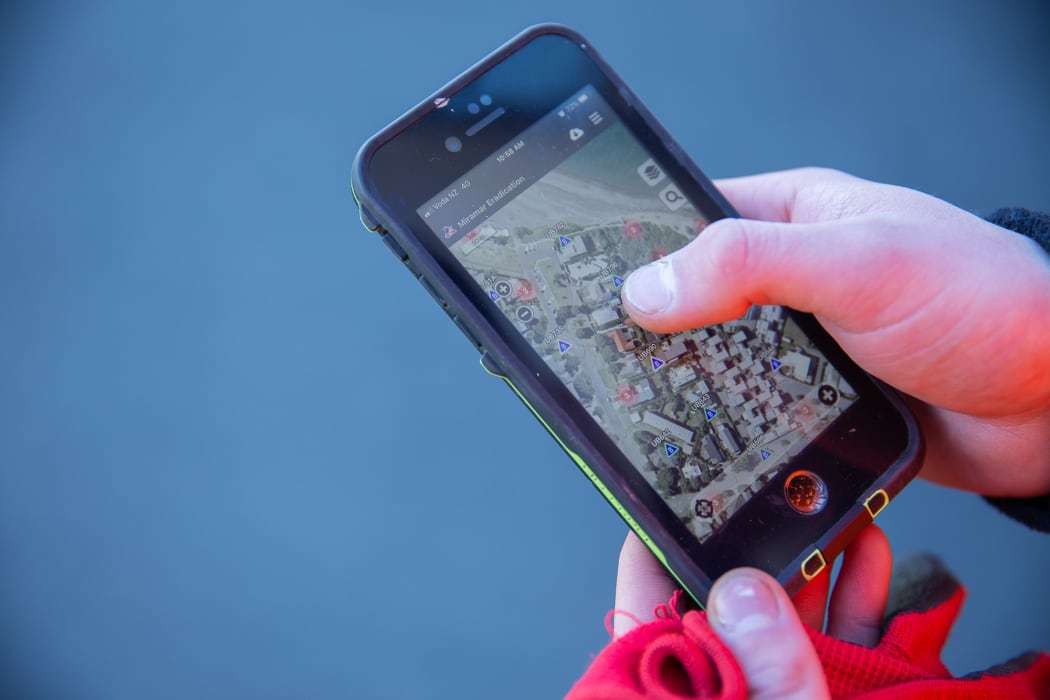
Predator-Free Wellington staff use the app Trap New Zealand to log how much rat bait is being taken and whether the traps have caught anything. Photo: Ian Robertson Photography Ltd./ Predator-Free Wellington
Find out more about predator-free efforts in New Zealand & urban restoration
Detector Gadget the conservation dog is a rodent detector dog.
Restoring Fiordland’s island lifeboats is an ambitious programme to get rid of rats, stoats and deer from many Fiordland islands.
Predator-Free New Zealand: dream or reality -a panel of experts discuss whether New Zealand can be predator-free by 2050.
Science of a mega-mast & planning wide-scale predator control – how we knew in advance that 2019 would see a rat & stoat plague following a mass seeding event, and how the Department of Conservation plans to respond.
Chemical camouflage - putting predators off the scent.
Predator-free in the city – predator-trapping in Wellington’s Polhill Reserve.


